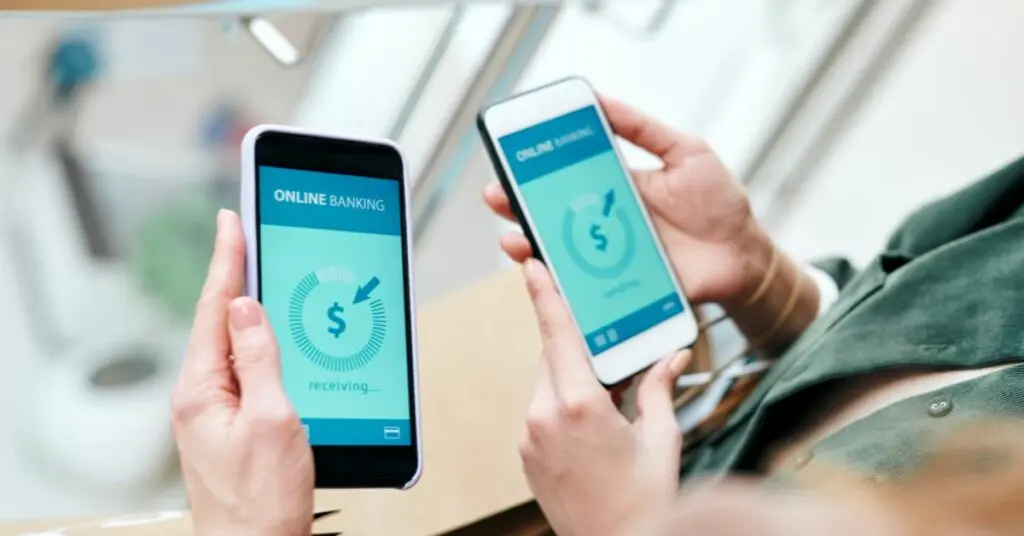Peer-to-peer (P2P) payments are electronic transactions made between two private individuals, without the need for a central authority or middleman. This type of transaction is convenient, fast, and typically free or low-cost.
Today, there are a number of popular P2P payment apps available, such as Venmo, Cash App, and Zelle. These apps make it easy to send money to friends, family, and businesses.
If you’re thinking about building a P2P payment app, there are a few things you’ll need to consider. In this guide, we’ll cover everything from the basics of how P2P payments works to the different features you’ll need to include in your app.
Read Also: Build an App like Trezor Cryptocurrency Wallet
What is Peer-to-Peer (P2P)?
Peer-to-peer (P2P) money transfer apps are digital platforms that enable users to send and receive money without the need for a traditional bank or financial institution. These apps typically use mobile phone numbers or email addresses to connect payers and payees and often employ a “push-pull” model in which the sender initiates the transaction and the receiver confirms the payment.

P2P money transfer apps have become increasingly popular in recent years, as they offer a convenient and affordable alternative to traditional methods of sending money. These apps are often used to send money to friends and family members, as well as for making online payments for goods and services.
What are the Benefits of P2P Payments?
There are a number of benefits associated with P2P payments, including:
Convenient:
P2P money transfer apps are typically very easy to use and allow users to send and receive money with just a few clicks.
Affordable:
P2P money transfer apps typically have lower fees than traditional banks or money transfer services.
Fast:
P2P money transfer apps can often send and receive money almost instantaneously.
Secure:
P2P money transfer apps employ various security measures to protect users’ personal and financial information.
Flexible:
P2P money transfer apps typically offer a variety of payment options, such as bank account transfers, credit or debit card payments, and even cash transfers.
How do P2P Payments Work?

P2P payments usually involve a third-party platform that allows users to send and receive money. These platforms typically use bank accounts, credit cards, or debit cards to process transactions.
When you want to make a P2P payment, you’ll need to sign up for an account with a P2P payment platform. Once you have an account, you can link your bank account, credit card, or debit card to the platform.
Once your account is set up, you can start sending and receiving money. To send money, you’ll need the recipient’s name and email address or phone number.
When you make a payment, the funds will be transferred from your account to the recipient’s account. The recipient can then use the money however they want.
What Features Should you Include in a P2P Payment App?
When building a P2P payment app, there are a few essential features you’ll need to include:
Transferring funds:
The core feature of any P2P payment app is the ability to send and receive money. Your app will need to be able to connect to users’ bank accounts or debit cards in order to transfer funds.
Payment history:
Your app should keep a record of all payments made through the app. This will help users keep track of their spending and see who they’ve paid in the past.
Push notifications:
Push notifications can be used to alert users of new payments and transaction activity.
Security:
As mentioned above, security is crucial for P2P payment apps. Your app will need to use various security measures, such as encryption and fraud detection, to protect users’ information and prevent unauthorized transactions.
A user-friendly interface:
The app should be easy to use and navigate.
Support for multiple payment methods:
The app should support bank accounts, credit cards, and debit cards.
Fast and reliable transactions:
Transactions should be processed quickly and without any errors.
Low fees:
Fees should be low to encourage users to use the app.
Security:
The app should have strong security measures in place to protect users’ information.
What are Some Popular P2P Payment Apps?
There are a number of popular P2P payment apps available today, including:
Venmo:
Venmo is a popular P2P payment app that’s owned by PayPal. It offers a variety of features, such as the ability to send money to friends and family, pay for goods and services, and transfer funds to your bank account.
Cash App:
Cash App is a P2P payment app from Square that offers features such as the ability to send and receive money, pay bills, and buy and sell cryptocurrency.
Zelle:
Zelle is a P2P payment app that’s offered by a consortium of major banks. It allows users to send and receive money quickly and easily.
Building a P2P Payment App

If you want to build a P2P payment app, there are a few steps you need to take. These steps include:
Choose the right platform:
The first step is to select the right platform for your app. You can either go for a native app or a cross-platform app. If you want to create a native app, then you will have to create separate versions for Android and iOS. But, if you want to create a cross-platform app, then you can use a single codebase for both the operating systems.
Select the features:
Once you have selected the platform, then you need to select the features that you want to include in your app. Some of the essential features that you should consider are peer-to-peer payments, bank transfers, bill splitting, and notifications.
Create a prototype:
The next step is to create a prototype of your app. This will help you in getting an idea about the overall look and feel of the app. It will also give you an opportunity to test out the various features that you have included in the app.
Develop the app:
Once you are satisfied with the prototype, then you can start developing the app. You will need to hire a team of developers who will help you in creating the various features of the app.
Test the app:
Once the development process is completed, then you need to test the app to make sure that it is working properly. You can use an emulator or a real device for testing purposes.
Launch the app:
After you have successfully tested the app, then you can launch it on the App Store or Google Play Store.
Promote your app:
You’ll need to promote your app to make sure people know about it. You can do this through social media, online ads, or offline marketing.
Final Thoughts
P2P payments are a convenient, fast, and typically low-cost way to send money to friends, family, and businesses. If you’re thinking about building a P2P payment app, there are a few things you’ll need to consider, including the features you’ll need to include and the different security measures you’ll need to take.
With the right planning and execution, you can build a successful P2P payment app that meets the needs of users.
As a premier Finance app development company, we offer end-to-end solutions for developing P2P payment apps. We have a team of experienced developers who have in-depth knowledge about the various technologies used in creating such apps. Moreover, we also provide post-launch support so that you can keep your app up and running smoothly.
We are proud to mention that our work has been recognized by leading B2B reviews and research platforms like GoodFirms, Clutch, MirrorView, and many more.
Contact us today to get started with the development of your P2P payment app.


Guide to Develop Peer-to-Peer Money Transfer App